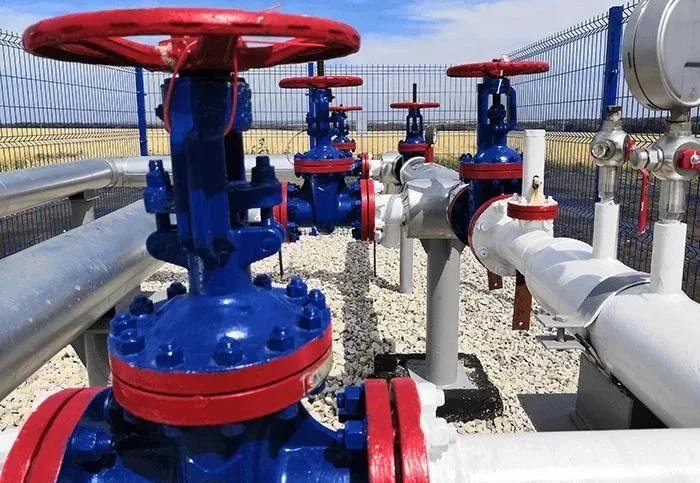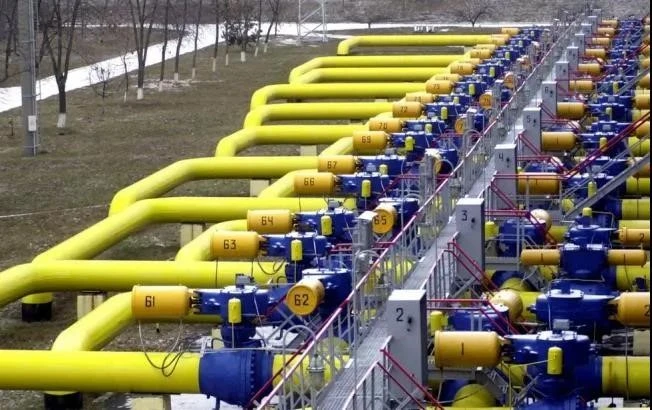1. During installation, pay attention that the direction of the medium flow should be consistent with the direction of the arrow on the valve body.
2. Check valves should be installed after the steam trap and before the condensate enters the recovery pipe to prevent the condensate from flowing back.
3. Open-stem valves should not be buried to prevent the valve stem from rusting. In the trench with cover plate, the valve should be installed at the place where maintenance, inspection and operation are convenient.
4. For some pipelines requiring less water hammer impact or no water hammer when closing, it is best to choose slow closing butterfly check valves and slow closing swing check valves.
5. When installing a threaded valve, it is necessary to ensure that the threads are intact, and seal fillers are coated according to different media. When tightening, it is necessary to exert uniform force to avoid damage to valves and valve fittings.
6. When installing the socket welding valve, there should be a gap of 1-2m between sockets to prevent the weld from cracking due to excessive thermal stress during welding.
7. When installing on a horizontal pipe, the valve stem should be vertically upward or inclined at a certain angle, and the valve stem is not allowed to be installed downward.
8. Argon arc welding should be adopted at the bottom of the butt valve and pipeline connection weld, and the valve should be opened during welding to prevent overheating and deformation.

9. Before installing the steam trap, be sure to purge the pipeline with steam under pressure to remove sundries in the pipeline.
10. Do not install steam traps in series.
11. Diaphragm-type check valves are often used in pipelines prone to water hammers because diaphragms can well eliminate water hammers caused by medium countercurrent, but they are generally used in low-pressure and normal-temperature pipelines due to temperature and pressure limitations.
12. A filter should be installed before the steam trap to ensure that the steam trap is not blocked by pipeline sundries, and the filter should be cleaned regularly.
13. For valves connected with flanges and threads, the valves should be closed during installation.
14. The flow direction of condensate water should be consistent with the arrow mark of steam trap installation.
15. The steam trap should be installed at the lowest part of the equipment outlet, and the condensate should be discharged in time to avoid vapor lock in the pipeline.
16. When installing flanged valves, ensure that the two flange end faces are parallel and concentric with each other.
17. Install the valve before and after the steam trap to facilitate the repair at any time.
18. The mechanical steam trap shall be installed horizontally.
19. If the steam trap is found to be leaking, it is necessary to discharge sewage and clean the filter screen in time, check frequently according to actual usage, and repair it at any time in case of failure.
20. Don't make the check valve bear the weight in the pipeline, and the large check valve should be independently supported so as not to be affected by the pressure generated by the piping system.
21. The condensate recovery pipe after the steam trap cannot be placed on a slope, which will increase the backpressure of the steam trap.
22. If there is no place to install a steam trap at the lowest part of the equipment, an anti-water bend should be added at the lowest part of the water outlet, and the steam trap should be installed after the condensate water level is raised to avoid the steam lock.
23. The outlet pipe of the steam trap should not be immersed in water.
24. If there is condensate recovery after the steam trap, the outlet pipe of the steam trap should be connected to the main pipe from the top of the recovery main pipe to reduce backpressure and prevent backflow.

25. Each device should be equipped with its own steam trap.
30. The lifting horizontal flap check valve should be installed on the horizontal pipe.
31. Install a steam trap in the steam pipe. The main pipe should have a condensate collecting well close to the radius of the main pipe, and then lead it to the steam trap with a small pipe.
32. If there is condensate recovery after the steam trap, separate recovery of pipelines with different pressure levels is required.
33. The lifting vertical flap check valve needs to be installed vertically.
34. When the mechanical steam trap is not used for a long time, it is necessary to remove the drain screw and drain the water inside to prevent freezing.
35. Before the thermo-static steam trap, it is necessary to have a super-cooling pipe more than one meter without thermal insulation. Other types of steam traps should be as close as possible to the equipment.
2. Check valves should be installed after the steam trap and before the condensate enters the recovery pipe to prevent the condensate from flowing back.
3. Open-stem valves should not be buried to prevent the valve stem from rusting. In the trench with cover plate, the valve should be installed at the place where maintenance, inspection and operation are convenient.
4. For some pipelines requiring less water hammer impact or no water hammer when closing, it is best to choose slow closing butterfly check valves and slow closing swing check valves.
5. When installing a threaded valve, it is necessary to ensure that the threads are intact, and seal fillers are coated according to different media. When tightening, it is necessary to exert uniform force to avoid damage to valves and valve fittings.
6. When installing the socket welding valve, there should be a gap of 1-2m between sockets to prevent the weld from cracking due to excessive thermal stress during welding.
7. When installing on a horizontal pipe, the valve stem should be vertically upward or inclined at a certain angle, and the valve stem is not allowed to be installed downward.
8. Argon arc welding should be adopted at the bottom of the butt valve and pipeline connection weld, and the valve should be opened during welding to prevent overheating and deformation.

9. Before installing the steam trap, be sure to purge the pipeline with steam under pressure to remove sundries in the pipeline.
10. Do not install steam traps in series.
11. Diaphragm-type check valves are often used in pipelines prone to water hammers because diaphragms can well eliminate water hammers caused by medium countercurrent, but they are generally used in low-pressure and normal-temperature pipelines due to temperature and pressure limitations.
12. A filter should be installed before the steam trap to ensure that the steam trap is not blocked by pipeline sundries, and the filter should be cleaned regularly.
13. For valves connected with flanges and threads, the valves should be closed during installation.
14. The flow direction of condensate water should be consistent with the arrow mark of steam trap installation.
15. The steam trap should be installed at the lowest part of the equipment outlet, and the condensate should be discharged in time to avoid vapor lock in the pipeline.
16. When installing flanged valves, ensure that the two flange end faces are parallel and concentric with each other.
17. Install the valve before and after the steam trap to facilitate the repair at any time.
18. The mechanical steam trap shall be installed horizontally.
19. If the steam trap is found to be leaking, it is necessary to discharge sewage and clean the filter screen in time, check frequently according to actual usage, and repair it at any time in case of failure.
20. Don't make the check valve bear the weight in the pipeline, and the large check valve should be independently supported so as not to be affected by the pressure generated by the piping system.
21. The condensate recovery pipe after the steam trap cannot be placed on a slope, which will increase the backpressure of the steam trap.
22. If there is no place to install a steam trap at the lowest part of the equipment, an anti-water bend should be added at the lowest part of the water outlet, and the steam trap should be installed after the condensate water level is raised to avoid the steam lock.
23. The outlet pipe of the steam trap should not be immersed in water.
24. If there is condensate recovery after the steam trap, the outlet pipe of the steam trap should be connected to the main pipe from the top of the recovery main pipe to reduce backpressure and prevent backflow.

25. Each device should be equipped with its own steam trap.
30. The lifting horizontal flap check valve should be installed on the horizontal pipe.
31. Install a steam trap in the steam pipe. The main pipe should have a condensate collecting well close to the radius of the main pipe, and then lead it to the steam trap with a small pipe.
32. If there is condensate recovery after the steam trap, separate recovery of pipelines with different pressure levels is required.
33. The lifting vertical flap check valve needs to be installed vertically.
34. When the mechanical steam trap is not used for a long time, it is necessary to remove the drain screw and drain the water inside to prevent freezing.
35. Before the thermo-static steam trap, it is necessary to have a super-cooling pipe more than one meter without thermal insulation. Other types of steam traps should be as close as possible to the equipment.
